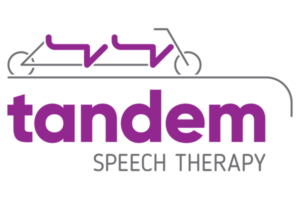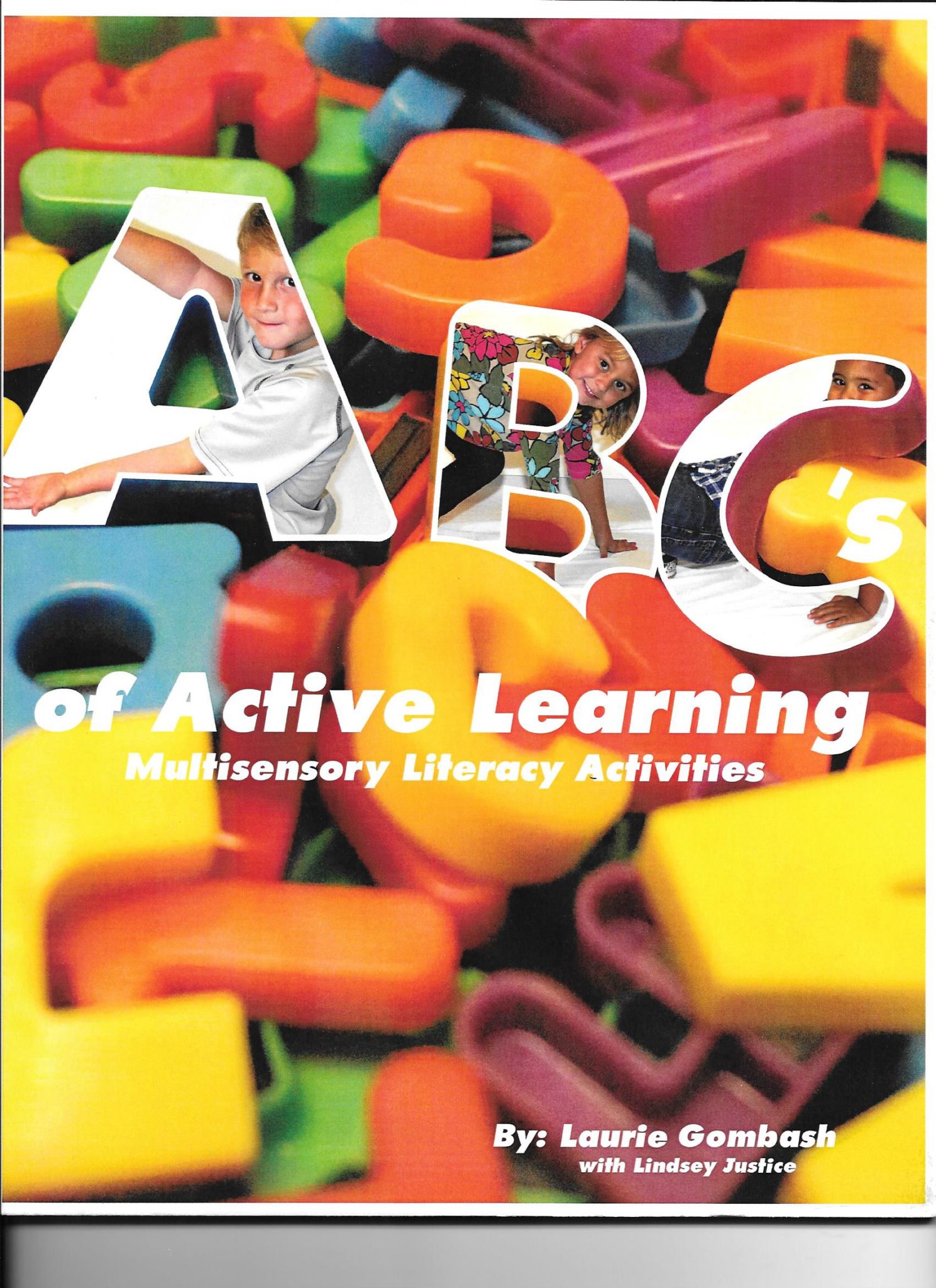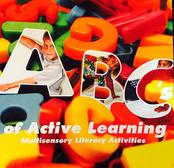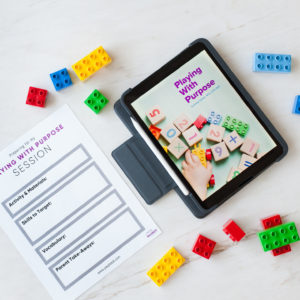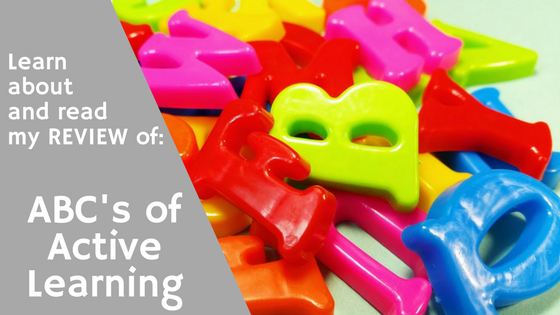
As a pediatric speech therapist, I wear many hats. One hat I sometimes wear is that of a literacy interventionist. Literacy refers to any reading or writing skills. Children with speech and language delays often have difficulty with literacy skills as well. Children who have difficulty pronouncing or understanding certain speech sounds may have difficulty with reading and writing those sounds. This can lead to trouble decoding and sounding out words. Children with language delays may not fully understand all the parts of language, such as grammar, syntax, or vocabulary. This can lead to problems understanding text or putting one’s ideas into writing in a logical manner. One way to build literacy and other speech and language skills is through active learning.
Through the magic of the internet, I was recently introduced to Laurie Gombash. Laurie is an experienced physical therapist who has a knack for turning ordinary items into fun therapeutic tools. She is also the brains behind The ABC’s of Movement® and webinars designed for therapists. Preschoolers start school ready to learn, and Laurie’s research showed her that children learn best through movement! 34% of children entering kindergarten cannot identify letters of the alphabet by name (NCES, 2000). Laurie’s mission is to combine movement experiences with the alphabet. Therefore, children learn their letters and make literacy connections while also improving their large motor skills. This lead her to expand the work she did in creating The ABC’s of Movement® and develop the ABC’s of Active Learning ©.
Overview:
Although there are endless resources available to introduce the alphabet to young children at our fingertips, the task of sorting through to find the most meaningful or just the right activity can be daunting. The ABC’s of Active Learning © is intentionally designed to serve as an easy-to-use, yet thorough guide to planning and implementing multisensory games and activities. This book targets the whole brain through movement activities, organized games, multi-step crafts, as well as multisensory pre-writing activities that can be used and graded for learners of all abilities. It can serve to complement a pre-existing curriculum, provide fresh ideas for introducing concepts or is a great way to promote skill generalization. You can be certain that any idea taken from this book will get your learner moving, be hands-on, and fun! The ABC’s of Active Learning © can stand alone or be a supplement to The ABC’s of Movement® activity cards. The activity cards and book download are available at www.ABCsofMovement.com and the book is available at Amazon Books.
ABC’s of Active Learning Book Features
Mulitsensory Learning:
As the book states, “multisensory learning is using more than one of the body’s senses to learn. The ultimate goal of multisensory learning is for children to have a strong, stable, and healthy sense of themselves in their environment. This includes being able to listen, attend, and remain calm and focused in their environment.” Young children learn through their experiences. Creating experiences that target multiple senses will provide more opportunities for learning and help to cement the new skills more deeply in the brain. Multisensory learning teaches the whole child and helps ensure your lessons are longlasting and meaningful.
Literacy:
In my pediatric speech therapy practice, I work with many preschool-age children. These kids are learning and building their basic pre-literacy skills. We want to help our young children develop pre-literacy skills because it provides a strong foundation for successful reading as they get older. A large component of this and one I work on in speech therapy is phonemic awareness. In this book, Laurie tells us that phonemic awareness is “the ability to hear, identify, and manipulate individual sounds (phonemes) that makeup words.” This is a wonderful skill to work on with preschool-age children because it involves the sounds only and requires no reading or writing. Read more in chapter 4 of the book!
Pre-literacy skills also include:
- familiarity with the conventions of print (i.e., reading left to right and top to bottom)
- recognizing letters by name
- forming letter-sound association (i.e., the b says “buh”)
- understanding the meaning of spoken words and phrases (i.e., receptive language or comprehension)
On the Pages:
The ABC’s of Active Learning © provides easy to follow activities for each letter of the alphabet as shown in the photos below. The pages all start with a gross motor movement associated with the target letter along with modifications so you can adjust to your child’s level. Following are the literacy-based tasks of phonemic awareness, rhyming, alliteration, and a suggested book to read and pair with your letter. Next, you will find instructions for a fine motor craft and a gross motor game. Last, on the page, you will read the multisensory writing strategies for the target letter.
The multisensory writing strategies include:
- Skywriting–using the body’s kinesthetic sense to help learn the alphabet
- Building–promoting handwriting readiness with fine motor tasks
- Tracing–developing an understanding of the formation of letters
- Writing–using a writing tool to build independence in letter production
- Tasting/Smelling the Alphabet–using your taste and smell senses to connect and explore the alphabet
- Alphabet Nature Walks–looking for and touching items, while exploring outside, that correspond to a specific letter
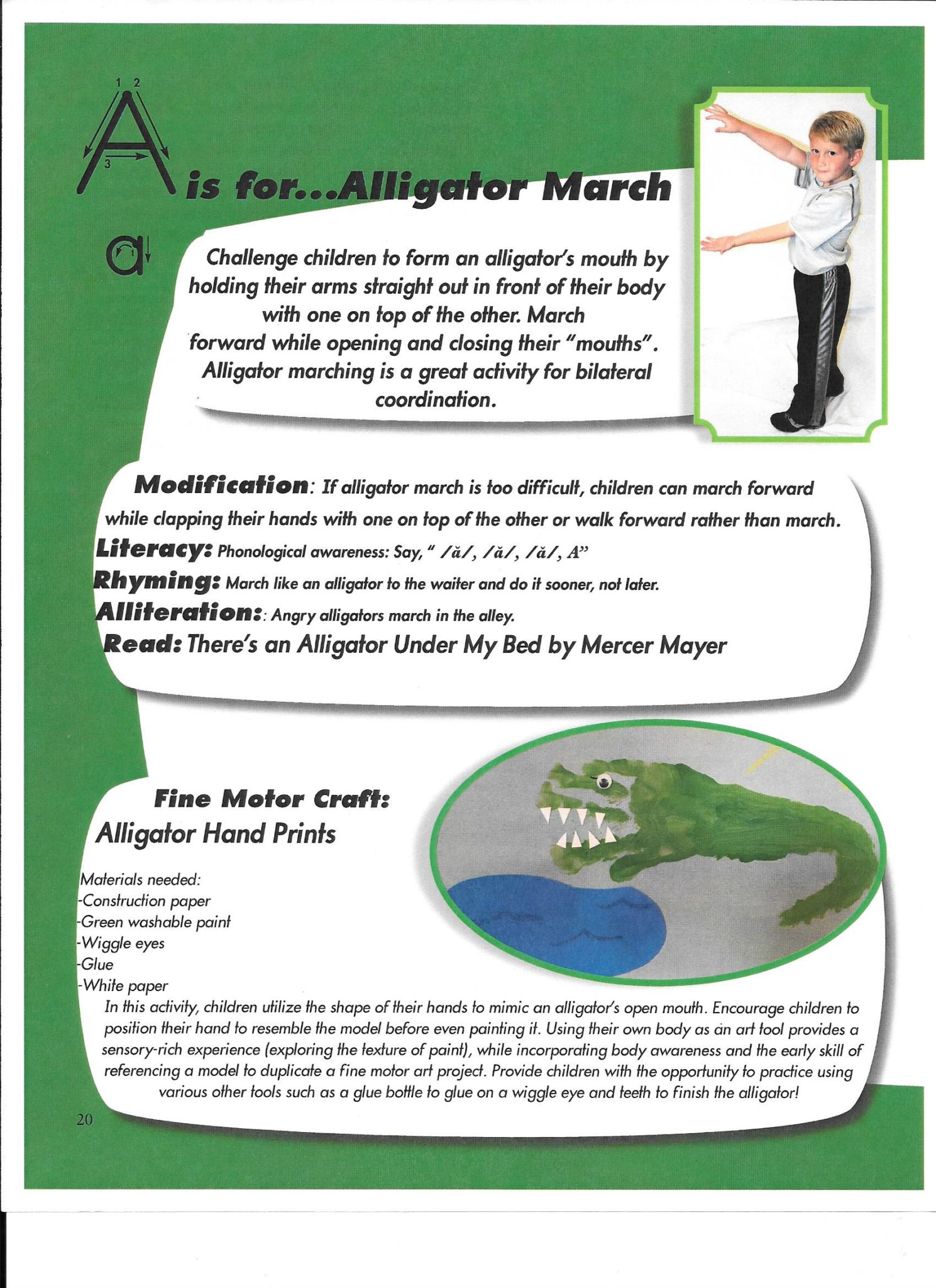
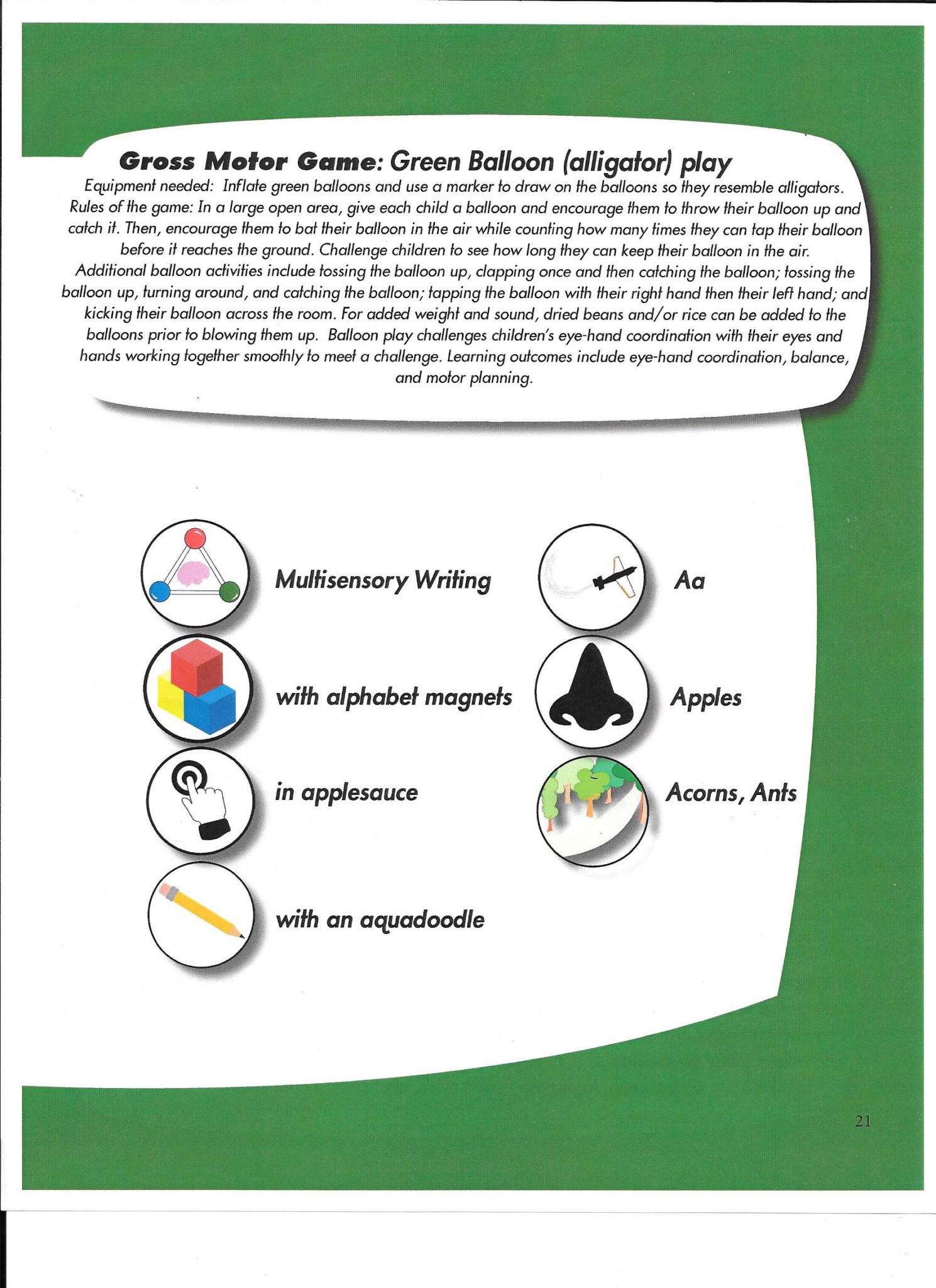
My Opinion:
A foundation of my speech therapy practice is helping parents learn how to help their children grow and develop. So I love finding resources that are great for me as a speech therapist and educator but also support parents at home. It is also essential to my work to use research-based strategies. The ABC’s of Active Learning © is both research-based and accessible. I enjoy that the book begins with a strong foundation and explanation of the methods in chapters 1-6 and moves on to easy to follow, and step-by-step instructions, for working with children on the individual letters of the alphabet. For example, each fine motor craft is accompanied by a photo of the finished project, a list of materials, and the instructions.
The other day, I used some of the activities for the letter K when working with a child on this speech sound. He loved kangaroo jumping around his backyard as we practicing saying the K sound with each jump. We also used the multisensory writing activities with his target words. We did skywriting before we sat down and then wrote his target words in playdough. I noticed an immediate difference in his attention, participation, and accuracy for producing the K sound in words like cat and kid. Though never skeptical of Laurie’s teaching in the book, I was pleasantly surprised at how quickly they took effect. Don’t just take it from me as a professional…
“ABC’s of Movement is the first motor activity that my preschooler enjoys doing with me. She didn’t like doing standard at home “therapy” work but she readily accepts this structured “game”. Not only is she making progress with her delays, but we are both getting exercise and laughing while trying the creative activities and reading the funny rhymes. I am so grateful for this program.”
If you suspect your child may experiencing literacy challenges, then considering contacting a pediatric speech-language pathologist. It’s never too early to begin intervention and learn more about active learning. In fact, research indicates the importance of early intervention for increased long-term success. Many deficits remediate very quickly, and others take time. If you are worried, seeking the expertise of a local SLP as early as possible is the best pathway to literacy development for your child.
Need Literacy Support?
Disclosure: Laurie Gombash granted me full access to her book at no charge upon my request. She did not solicit this review or my opinions.
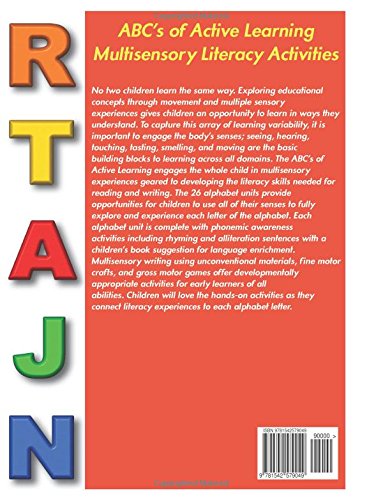
Start Playing With Purpose
Learn how to purposefully and intentionally interact with your child during play and help them increase opportunities for speech and language development with our Playing with Purpose book!
